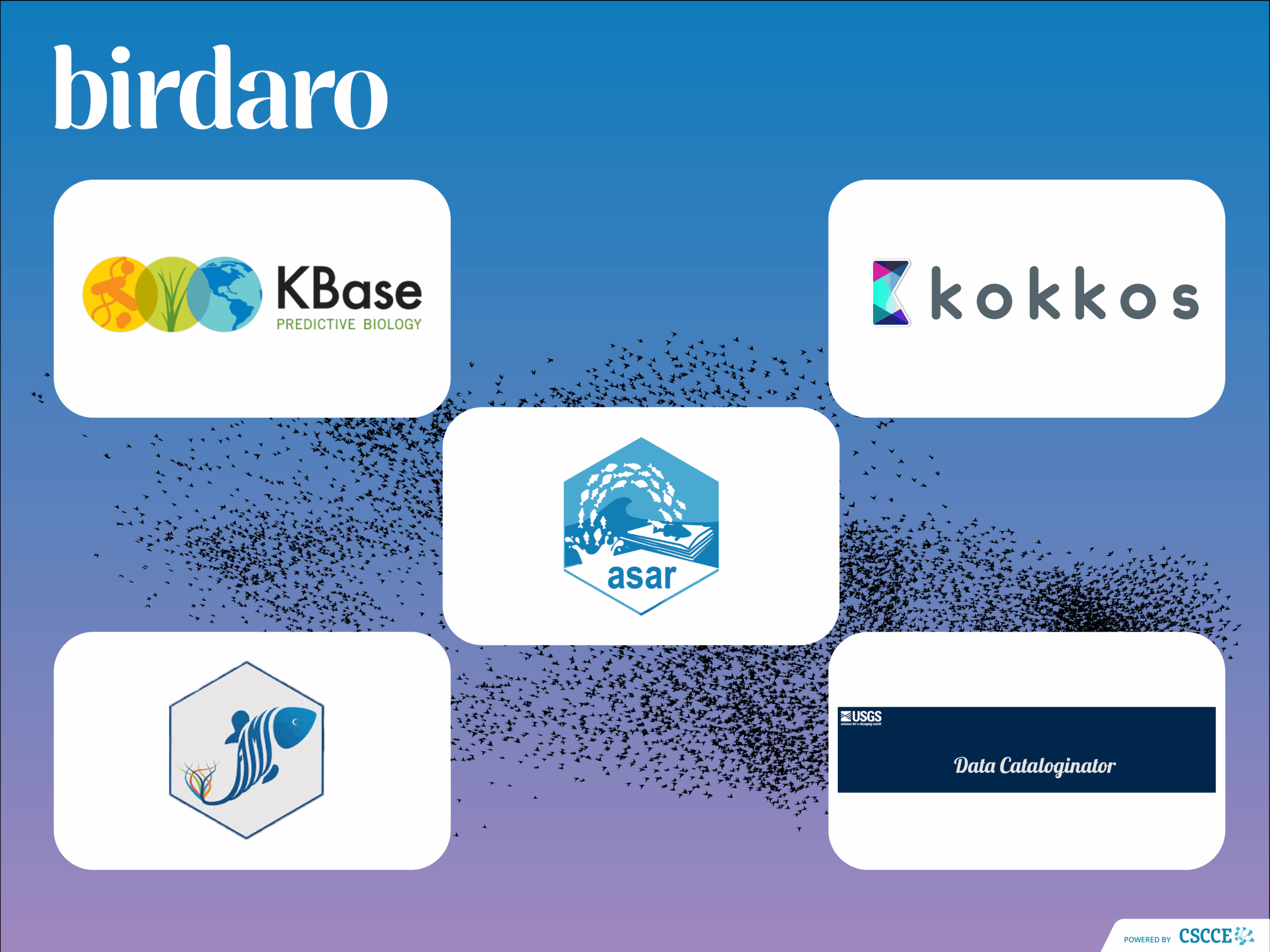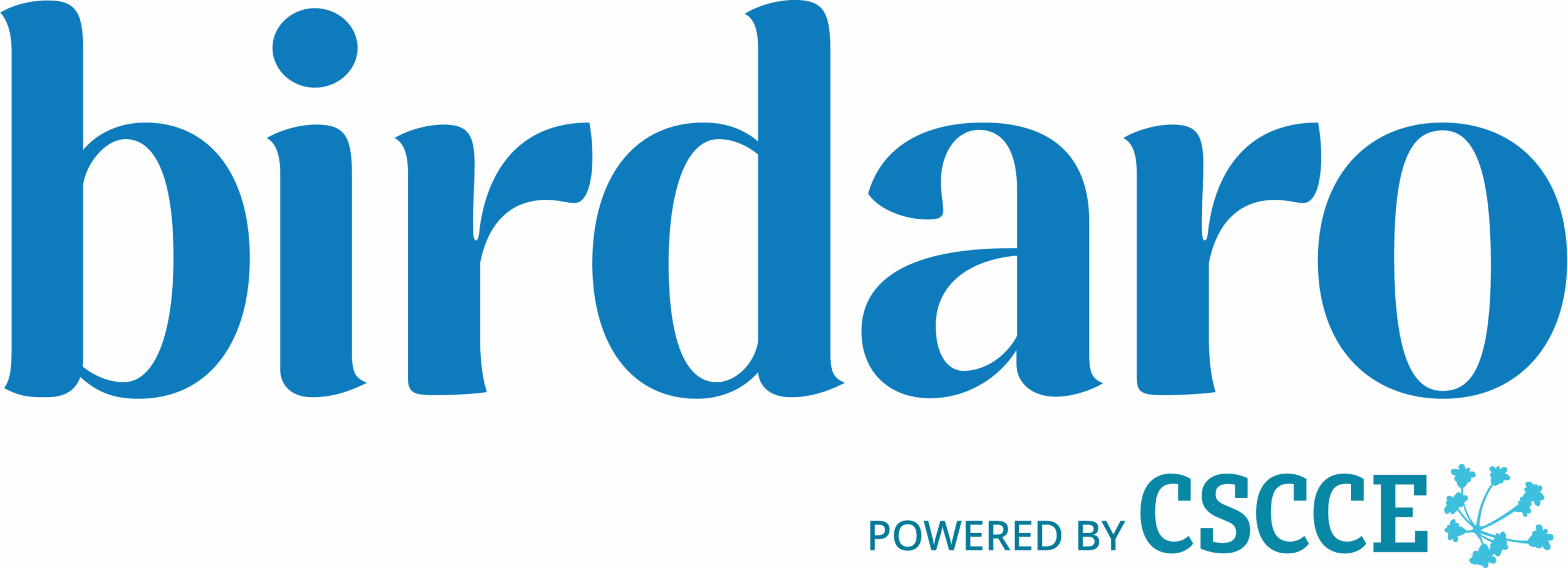Introducing the inaugural Birdaro training program cohort: Part 2
At the end of last month we launched the pilot cohort of the Birdaro training program for open-source leaders, which will run for 12 weeks until mid-December 2025.
Thanks to strong interest in the program, we have put together a cohort that represents a variety of focus areas, fiscal homes, project stages and project sizes. You can read more about how we intentionally built this cohort of participants, and used their input to iteratively shape the pilot curriculum in an earlier blog post.
In this series of five blog posts, we’re introducing you to the teams taking part in the Birdaro 2025 pilot cohort. In this post, we’re featuring the following open-source software, hardware and data projects that “live” within US federal agencies and national labs:
- The US Department of Energy Systems Biology Knowledgebase (KBase) – A platform for data sharing and data analysis in the biological sciences – including via a non-command line interface
- Kokkos – A project that originated in the US Department of Energy National Labs that supports researchers writing C++ applications
- asar – A partially-automated stock reporting system for the US National Oceanic and Atmospheric Administration (NOAA)
- Fisheries Integrated Modeling System (FIMS) – A population dynamics model for fisheries health and management, also for NOAA
- USGS Model Catalog / Data Cataloginator – A catalog of all scientific-model products (code, publications, people, data) created by USGS researchers
You can read more about each of these projects below, and visit this page of the Birdaro website to learn more about individual team members.

Project bios
Project bios are based on information provided by the project teams during the application and registration process.
Department of Energy Systems Biology Knowledgebase (KBase)
KBase is an established open source data analysis platform for biological sciences data supported by staff at Lawrence Berkeley National Lab. KBase is designed to provide an accessible graphical user interface for users that are not savvy on command line, along with a software development kit for developers to contribute their tools to the community platform for broader adoption. KBase supports the FAIR (findable, accessible, interoperable, reusable) data principles, and provides an open access mechanism for data publication with a DOI and full citation rights. Now, KBase is undergoing an extensive update to its hardware and software stack, and simultaneously federating with related data platforms – a process that will require careful leadership across multiple teams.
Kokkos
The Kokkos C++ Performance Portability Ecosystem is a production level solution for writing modern C++ applications in a hardware agnostic way. It is a Linux Foundation project and part of the High Performance Software Foundation (HPSF). Kokkos originated in the US Department of Energy National Labs, and was part of the Exascale Computing Project. Today, the principal organizations supporting Kokkos development are Sandia National Laboratories, Oak Ridge National Laboratory and the French Alternative Energies and Atomic Energy Commission. The team is hoping to refine their project management approach while participating in the Birdaro training program.
asar
At the US National Oceanic and Atmospheric Administration (NOAA), Stock assessment (SA) scientists are expected to produce reports that continuously grow in frequency, quality, and complexity, despite steady or declining resources. However, there are multiple large bottlenecks that prevent the SA production process from being timely, efficient, and effective. The goal of asar is to automate stock assessment reports for science centers so they are reproducible and cohesive across the agency, and benefit fisheries management stakeholders with diverse roles. As a new project, asar is considering questions of project management and decision-making across the staff team, as well as community and volunteer engagement.
Fisheries Integrated Modeling System
Also based at NOAA, the Fisheries Integrated Modeling System is a population dynamics model used to inform the management of marine resources. Currently, each of the six regional NOAA science centers have population dynamics models of their own, but the Fisheries Integrated Modeling System aims to concentrate effort into a single model that can be used throughout the US federal government. This means that the team is working to nurture collaborations across several boundaries – a community engagement challenge common to many collaborative projects in STEM (not just the OS space!).
USGS Science Data Management Tools and Software
Within the U.S. Geological Survey (USGS), the Science Data Management branch designs, supports, and builds community around tools and services that make scientific data accessible and usable. As part of this work, team members have built a model catalog to link, expose, and align all scientific-model products (code, publications, people, data) across all disciplines in USGS. To complement this, they also developed the Data Cataloginator, a simple template for cataloging items, projects, and products. A focus for the project team right now is working with various scientific communities to identify where new contributions and effort will have the highest value.
Additional information
- You can also explore individual participant bios, on the Birdaro website.
- You can find out more about the curriculum we’ve developed to support the pilot cohort participants’ shared interest in governance and documentation here.
Check out the other participating projects
Post 1: OpenWellness, movement, Open Source with SLU, and the Community Software Facility (NCAR)
Post 4: The R Project, RSpace, AsyncAPI, OpenRefine, and Scikit-learn
Post 5: CIB Mango Tree, MNE-Python, ArviZ, icepyx, and OpenMRS





